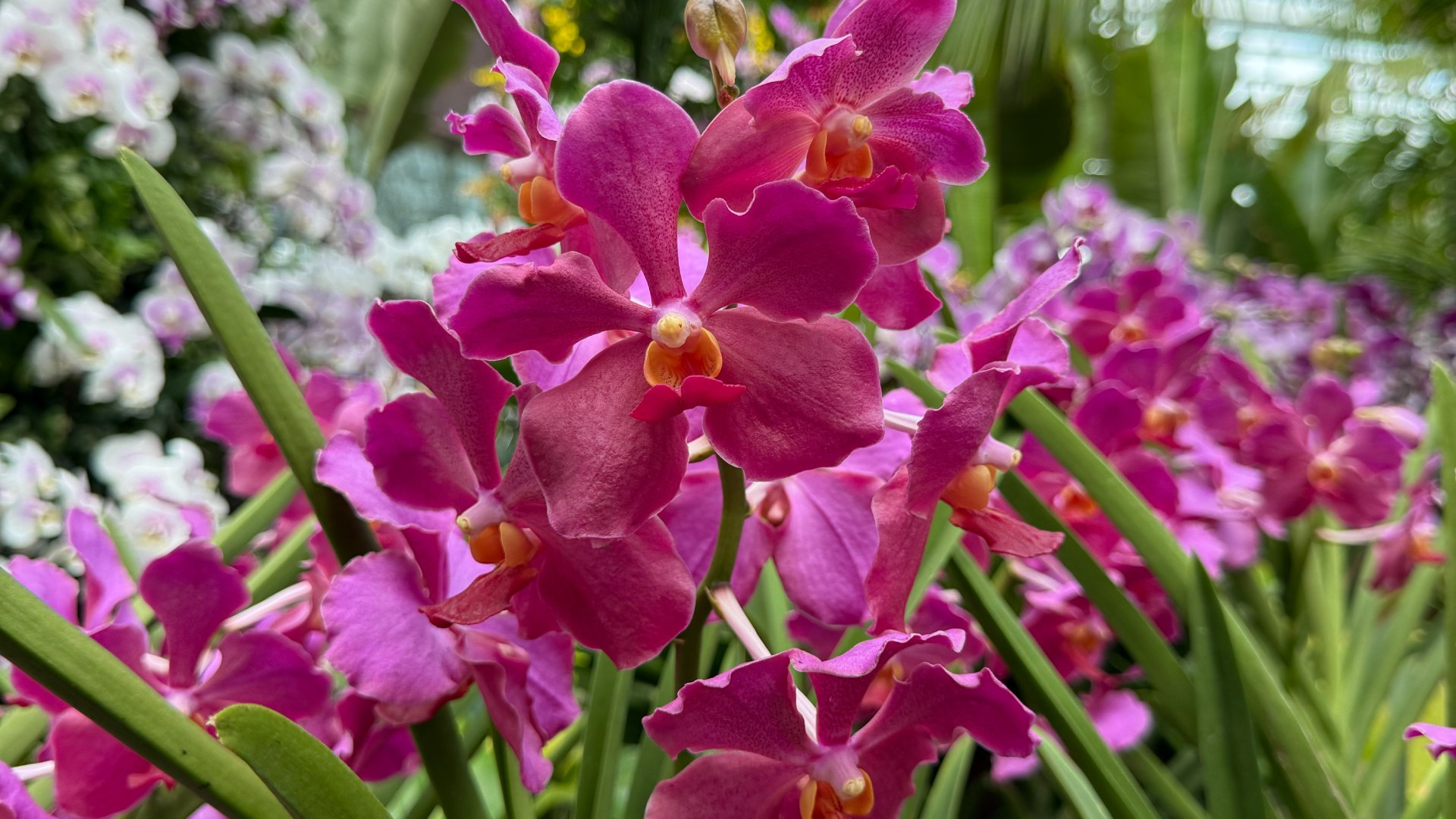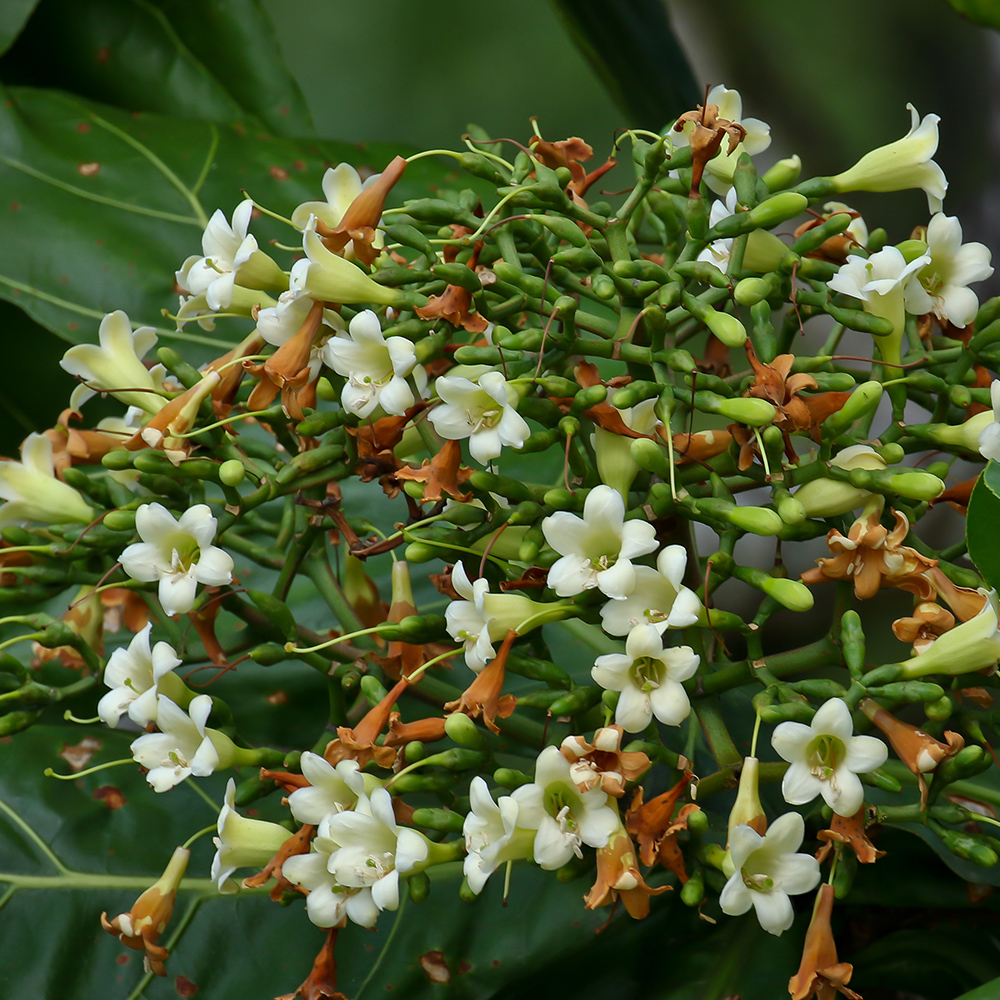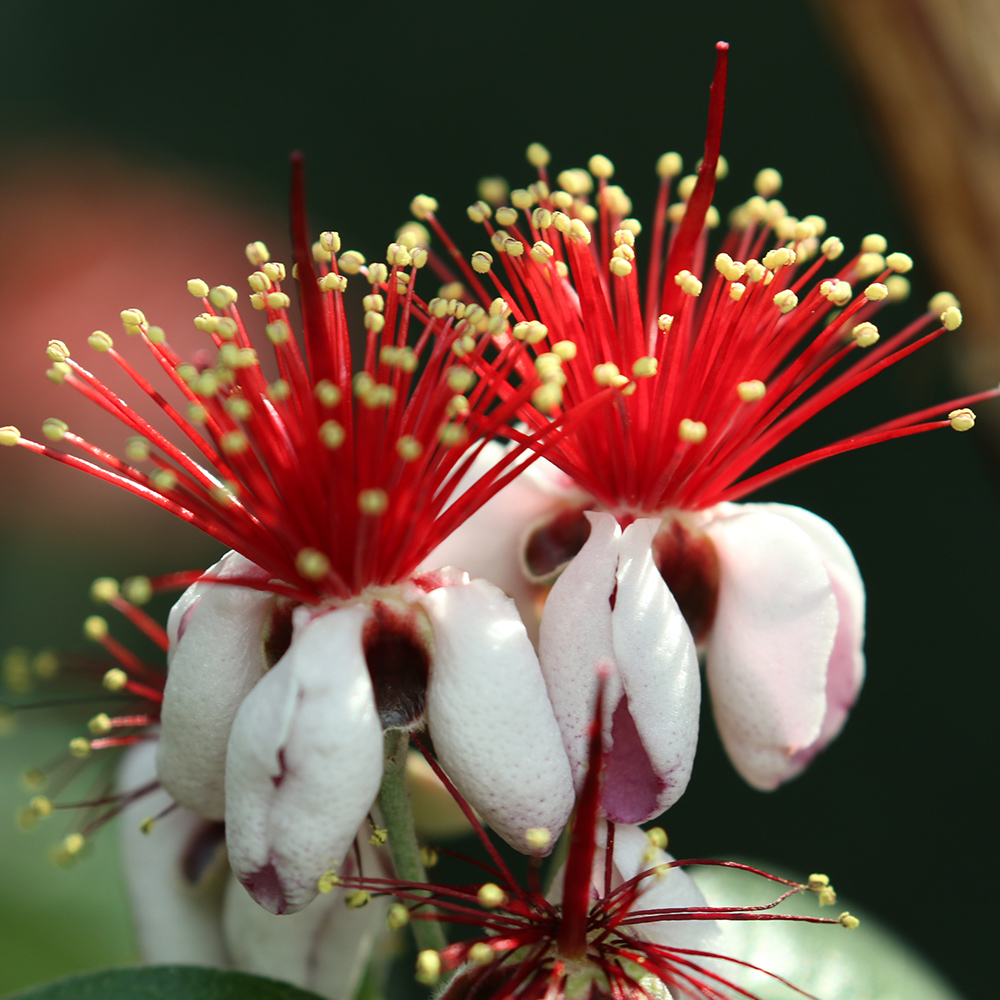Gurania eriantha
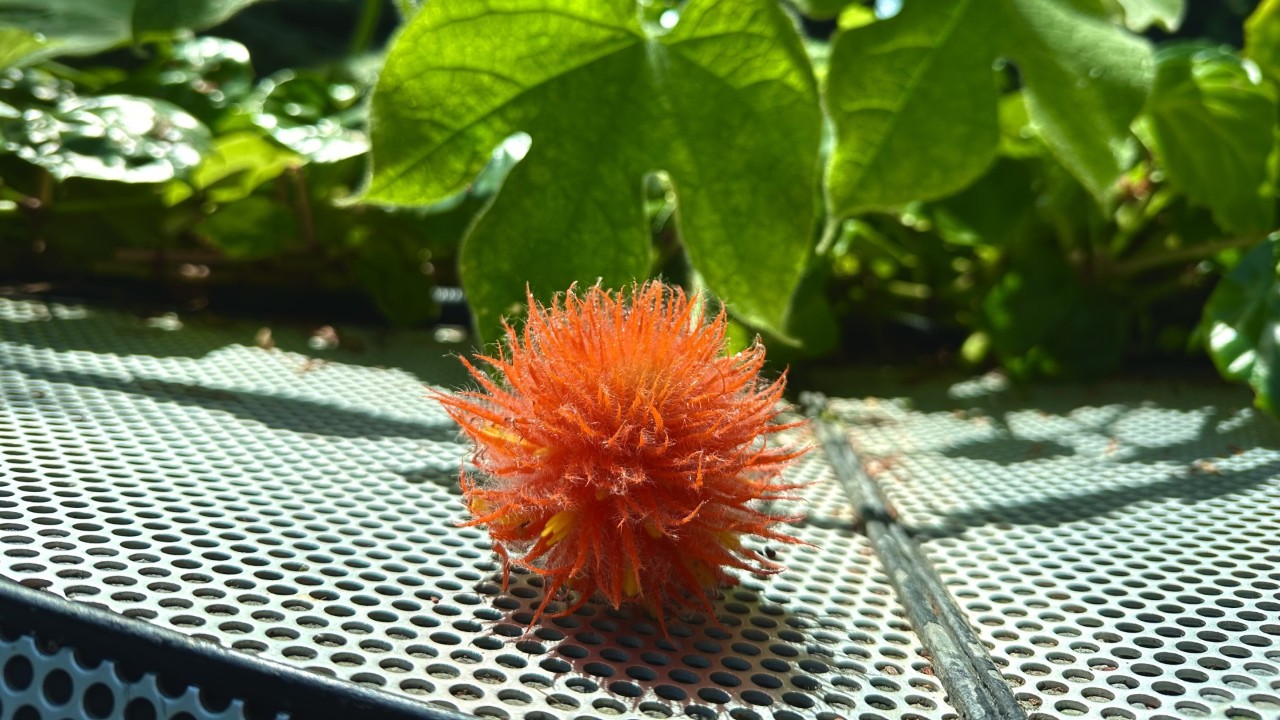
Deep in the lush tropical forests of Central and South America, Gurania eriantha winds its way through the canopy, a slender green thread in the great tapestry of tropical life. This climbing vine belongs to the cucumber family (Cucurbitaceae) the same plant family that includes pumpkins, melons, and gourds. But unlike its edible cousins, Gurania is prized more for its beauty and its curious reproductive biology than for the dinner table!
The vine’s leaves are broad and hairy, and can range in shape from simple, ovate form to having as many as five lobes, depending on the plant’s growth and maturity. Its flowers are striking - the calyx (the collective sepals of a flower) are vibrant red-orange, with the yellow corolla (the collective petals of a flower) in the center of the flower. Multiple male flowers are arranged into a dangling cluster on the peduncle (the stem that carries the inflorescence), looking like a little blaze, which stands out in the lush green forest, guiding pollinators, including hummingbirds and insects, to their nectar reward!
At first glance, one might assume Gurania eriantha follows the common plant strategy of being dioecious - having separate male and female plants. For decades, that was the accepted belief by botanists. But careful, long-term observations of the same plants revealed a more fascinating truth: Gurania is monoecious, meaning both male and female flowers appear on the same plant, though not always at the same time.
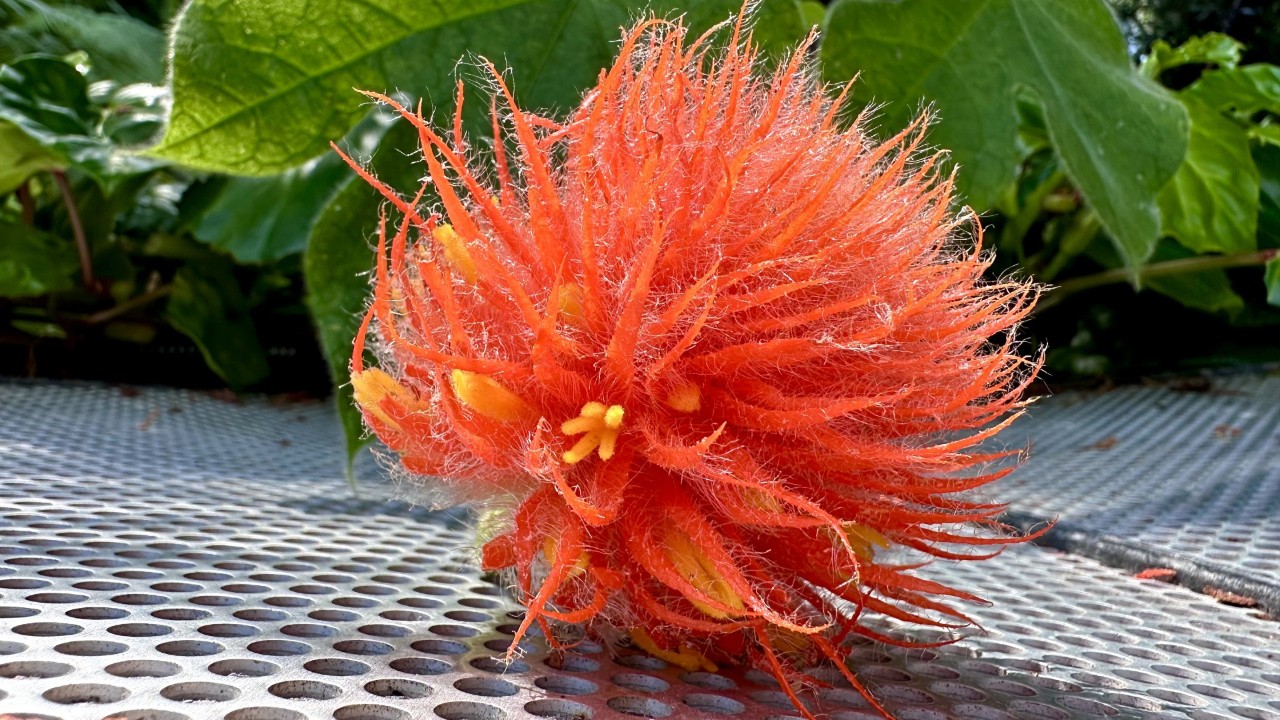 An inflorescence of male flowers produced on our vines in Cloud Forest.
An inflorescence of male flowers produced on our vines in Cloud Forest.
Here’s where things get truly unusual: Gurania changes its sexual expression depending on its size and environment. Small, thin vines produce only male flowers. As they grow larger and more robust - often under favourable conditions - they switch to producing female flowers. In greenhouses, a healthy vine can make this leap from all-male to female flowering in a single season. But in poor conditions, the same plant may stay male, revert to male after being female, or remain purely vegetative.
There’s also a quicker, intraseasonal sex change. A vine might begin a season producing mostly female flowers, but sneak in a few male ones to ensure pollen is still in play - a clever evolutionary trick. At any single point in time, these vines are usually functionally unisexual, even though they have the potential to produce both male and female flowers.
Because such changes aren’t obvious without long-term study, botanists now suspect that other plants once labelled as strictly dioecious may also be quietly bending the rules. In the rainforest, where survival demands flexibility, Gurania eriantha is a living reminder that even something as fundamental as sex reproduction can be intriguingly fluid! It’s certainly very different from some of its more familiar edible cousins of the genus Cucurbita that produce single male or female flowers simultaneously on the same plant, with male flowers usually far outnumbering the female flowers. If successfully pollinated and fertilized, these female flowers develop into fruits, such as squashes, pumpkins, or gourds, depending on the species or hybrid!
Come to Cloud Forest and witness this flame-like flower cluster of Gurania eriantha as you trek around the foot of Cloud Forest mountain, on the bridge overlooking the Secret Garden! Then, stay tuned and see whether our plants start to produce female flowers too!
Zeke Chen, Manager (Conservatory Operations)
Ever since his tiny hands could hold on to a small toy shovel and sowed the first apricot seed in the garden, the passion for plants has started to grow in Zeke’s heart.
